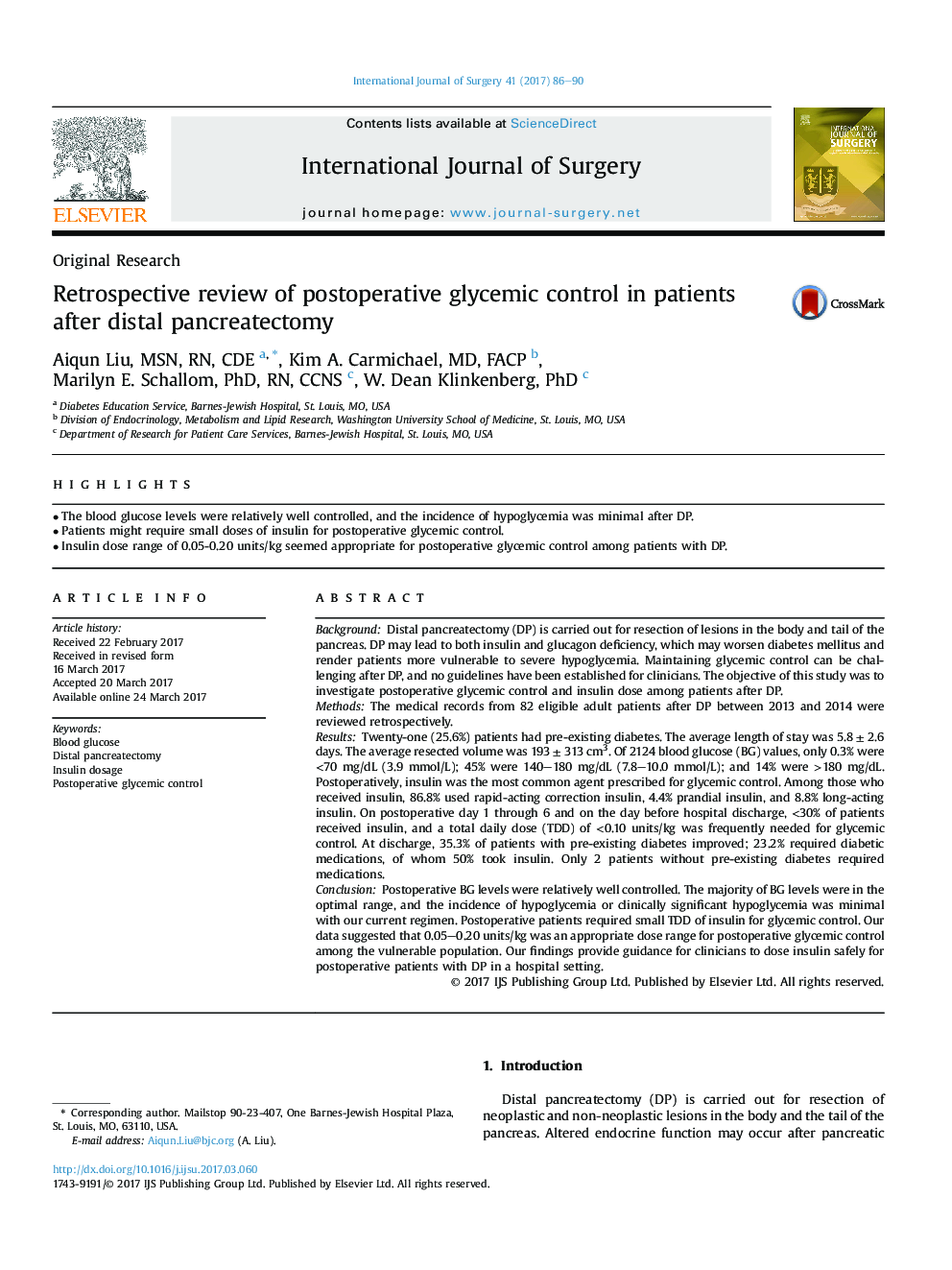| کد مقاله | کد نشریه | سال انتشار | مقاله انگلیسی | نسخه تمام متن |
|---|---|---|---|---|
| 5731778 | 1611937 | 2017 | 5 صفحه PDF | دانلود رایگان |
- The blood glucose levels were relatively well controlled, and the incidence of hypoglycemia was minimal after DP.
- Patients might require small doses of insulin for postoperative glycemic control.
- Insulin dose range of 0.05-0.20 units/kg seemed appropriate for postoperative glycemic control among patients with DP.
BackgroundDistal pancreatectomy (DP) is carried out for resection of lesions in the body and tail of the pancreas. DP may lead to both insulin and glucagon deficiency, which may worsen diabetes mellitus and render patients more vulnerable to severe hypoglycemia. Maintaining glycemic control can be challenging after DP, and no guidelines have been established for clinicians. The objective of this study was to investigate postoperative glycemic control and insulin dose among patients after DP.MethodsThe medical records from 82 eligible adult patients after DP between 2013 and 2014 were reviewed retrospectively.ResultsTwenty-one (25.6%) patients had pre-existing diabetes. The average length of stay was 5.8 ± 2.6 days. The average resected volume was 193 ± 313 cm3. Of 2124 blood glucose (BG) values, only 0.3% were <70 mg/dL (3.9 mmol/L); 45% were 140-180 mg/dL (7.8-10.0 mmol/L); and 14% were >180 mg/dL. Postoperatively, insulin was the most common agent prescribed for glycemic control. Among those who received insulin, 86.8% used rapid-acting correction insulin, 4.4% prandial insulin, and 8.8% long-acting insulin. On postoperative day 1 through 6 and on the day before hospital discharge, <30% of patients received insulin, and a total daily dose (TDD) of <0.10 units/kg was frequently needed for glycemic control. At discharge, 35.3% of patients with pre-existing diabetes improved; 23.2% required diabetic medications, of whom 50% took insulin. Only 2 patients without pre-existing diabetes required medications.ConclusionPostoperative BG levels were relatively well controlled. The majority of BG levels were in the optimal range, and the incidence of hypoglycemia or clinically significant hypoglycemia was minimal with our current regimen. Postoperative patients required small TDD of insulin for glycemic control. Our data suggested that 0.05-0.20 units/kg was an appropriate dose range for postoperative glycemic control among the vulnerable population. Our findings provide guidance for clinicians to dose insulin safely for postoperative patients with DP in a hospital setting.
Journal: International Journal of Surgery - Volume 41, May 2017, Pages 86-90
